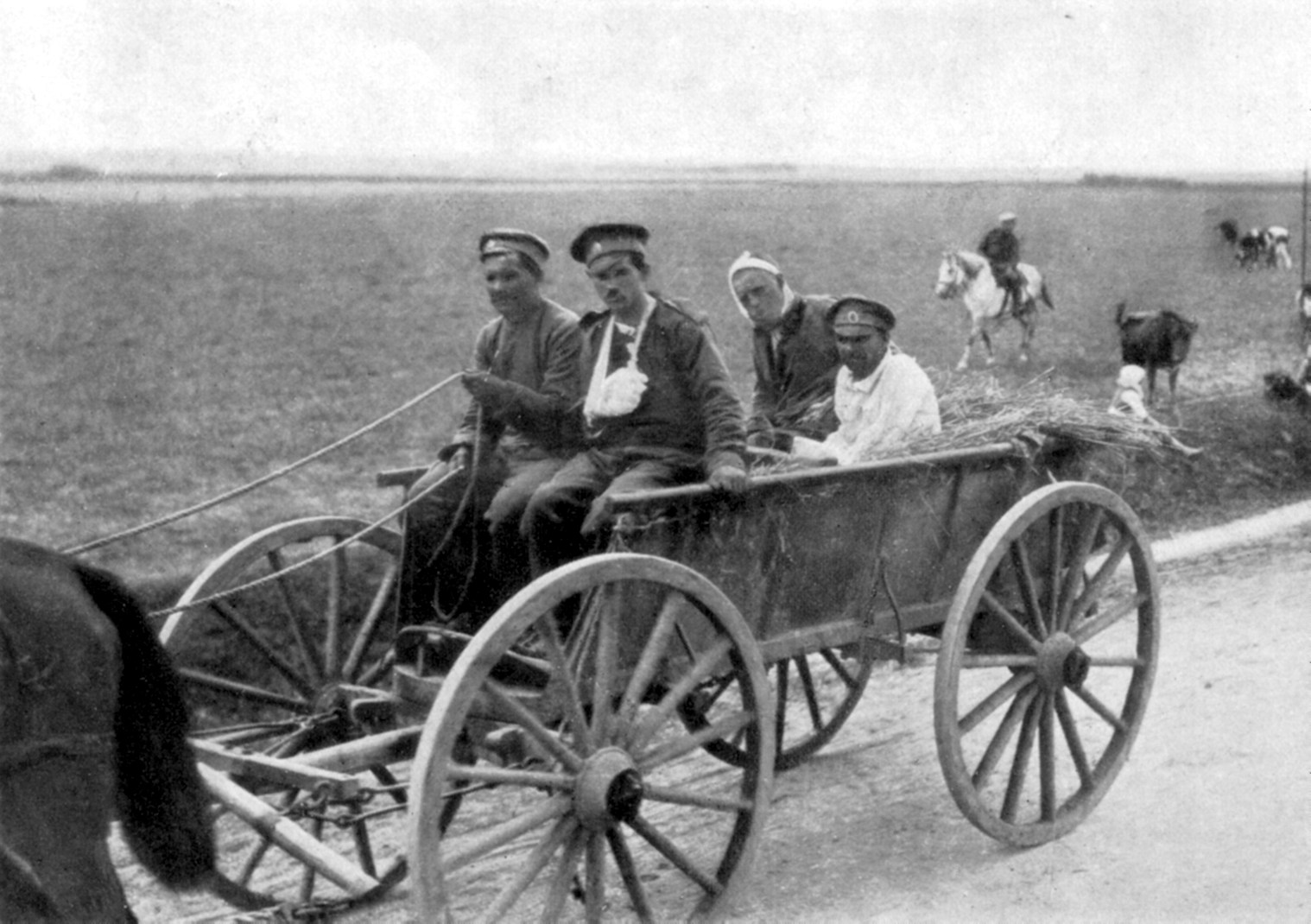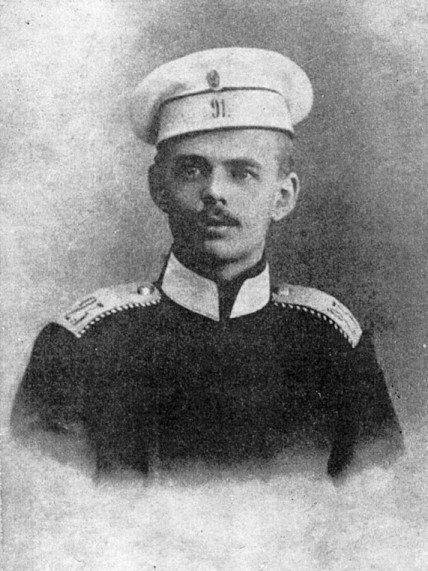|
Kamil Giżycki
Kamil Giżycki (19 August 1893, at Grybów – 19 April 1968, at Wrocław) was a Polish writer, traveler, engineer, and soldier for Austria-Hungary during World War I, the Polish Siberian Brigade during the Polish–Soviet War, the White Army during the Russian Civil War, and, later, the Polish Home Army during the Invasion of Poland. Biography Education Giżycki studied at the famous Jesuit school Zakład Naukowo-Wychowawczy Ojców Jezuitów w Chyrowie in Khyriv. He graduated from Technical University of Munich. Military career World War I During World War I he served in Austro-Hungarian army and he was injured and captured by Russian soldiers. As a prisoner of war Giżycki was sent to Siberia. Polish-Soviet War After the outbreak of the February Revolution of 1917, Giżycki served in Czechoslovak Legions, but later joined the Polish 5th Division in January 1919, with whom he fought against the Bolsheviks. Russian Civil War and the White movement In January 1 ... [...More Info...] [...Related Items...] OR: [Wikipedia] [Google] [Baidu] |
February Revolution
The February Revolution (), known in Soviet historiography as the February Bourgeois Democratic Revolution and sometimes as the March Revolution or February Coup was the first of Russian Revolution, two revolutions which took place in Russia in 1917. The main events of the revolution took place in and near Petrograd (now Saint Petersburg), the then-capital of Russia, where long-standing discontent with the monarchy erupted into mass protests against food rationing on 23 February Old Style and New Style dates, Old Style (8 March Old Style and New Style dates, New Style). Revolutionary activity lasted about eight days, involving mass demonstrations and violent armed clashes with police and Special Corps of Gendarmes, gendarmes, the last loyal forces of the Russian monarchy. On 27 February O.S. (12 March N.S.), most of the forces of the capital's garrison sided with the revolutionaries. In the same day, the Russian Provisional Government, made up by left-leaning State Duma (Russ ... [...More Info...] [...Related Items...] OR: [Wikipedia] [Google] [Baidu] |
State Of Buryat-Mongolia
The State of Buryat-Mongolia was a buffer Buryat-Mongolian state,''Бабаков В. В.'', Бурнацком - Бурнардума: первый опыт национально-государственного строительства в Бурятии, Улан-Удэ, 1997 г. during the Russian Civil War The Russian Civil War () was a multi-party civil war in the former Russian Empire sparked by the 1917 overthrowing of the Russian Provisional Government in the October Revolution, as many factions vied to determine Russia's political future. I .... The main government body was Burnatskom, the Buryat National Committee. The state de facto ceased to exist after the formation of the Far Eastern Republic, which divided Buryat-Mongolia in two: 4 '' aimags'' became part of the Far Eastern Republic, while the other 4 formed Buryat-Mongol autonomies of RSFSR. States and territories disestablished in 1921 Notes References {{reflist Mongol states Post–Russian ... [...More Info...] [...Related Items...] OR: [Wikipedia] [Google] [Baidu] |
Ulan-Ude
Ulan-Ude (; , ; , ) is the capital city of Buryatia, Russia, located about southeast of Lake Baikal on the Uda River, Buryatia, Uda River at its confluence with the Selenga River, Selenga. According to the Russian Census (2021), 2021 Census, 437,565 people lived in Ulan-Ude; up from 404,426 recorded in the Russian Census (2010), 2010 Census, making the city the third-largest in the Russian Far East by population. Names Ulan-Ude was first called Udinskoye (, ) for its location on the Uda River (Republic of Buryatia), Uda River. It was founded as a small fort in 1666. From around 1735, the settlement was called Udinsk (, ) and was granted town status under that name in 1775. It was renamed Verkhneudinsk (, ; "Upper Udinsk") in 1783, to differentiate it from Nizhneudinsk ("Lower Udinsk") lying on a different Chuna River, Uda River near Irkutsk which was granted town status that year. The descriptors "upper" and "lower" refer to the positions of the two cities relative to each othe ... [...More Info...] [...Related Items...] OR: [Wikipedia] [Google] [Baidu] |
Transbaikalia
Transbaikal, Trans-Baikal, Transbaikalia ( rus, Забайка́лье, r=Zabaykal'ye, p=zəbɐjˈkalʲjɪ), or Dauria (, ''Dauriya'') is a mountainous region to the east of or "beyond" (trans-) Lake Baikal at the south side of the eastern Siberia and the south-western corner of the Far Eastern Russia. The steppe and wetland landscapes of Dauria are protected by the Daursky Nature Reserve, which forms part of a World Heritage Site named " Landscapes of Dauria". Geography Dauria stretches for almost 1,000 km from north to south from the Patom Plateau and North Baikal Highlands to the Russian state borders with Mongolia and China. The Transbaikal region covers more than 1,000 km from west to east from Lake Baikal to the meridian of the confluence of the Shilka and Argun Rivers. To the west and north lies the Irkutsk Oblast; to the north the Republic of Sakha (Yakutia), to the east the Amur Oblast. Oktyabrsky (Октябрьский) village, Amur Oblast, near ... [...More Info...] [...Related Items...] OR: [Wikipedia] [Google] [Baidu] |
Hand Grenades
A grenade is a small explosive weapon typically thrown by hand (also called hand grenade), but can also refer to a shell (explosive projectile) shot from the muzzle of a rifle (as a rifle grenade) or a grenade launcher. A modern hand grenade generally consists of an explosive charge ("filler"), a detonator mechanism, an internal striker to trigger the detonator, an arming safety secured by a transport safety. The user removes the transport safety before throwing, and once the grenade leaves the hand the arming safety gets released, allowing the striker to trigger a primer that ignites a fuze (sometimes called the delay element), which burns down to the detonator and explodes the main charge. Grenades work by dispersing fragments (fragmentation grenades), shockwaves ( high-explosive, anti-tank and stun grenades), chemical aerosols (smoke, gas and chemical grenades) or fire (incendiary grenades). Their outer casings, generally made of a hard synthetic material or steel, are ... [...More Info...] [...Related Items...] OR: [Wikipedia] [Google] [Baidu] |
Land Mines
A land mine, or landmine, is an explosive weapon often concealed under or camouflaged on the ground, and designed to destroy or disable enemy targets as they pass over or near it. Land mines are divided into two types: anti-tank mines, which are designed to disable tanks or other vehicles; and anti-personnel mines, designed to injure or kill people. Land mines are typically pressure activated, exploding automatically when stepped on by a person or driven over by a vehicle, though alternative detonation mechanisms are sometimes used. A land mine may cause damage by direct blast effect, by fragments that are thrown by the blast, or by both. Land mines are typically laid throughout an area, creating a ''minefield'' which is dangerous to cross. The use of land mines is controversial because of their indiscriminate nature and their potential to remain dangerous many years after a conflict has ended, harming civilians and the economy. With pressure from a number of campaign grou ... [...More Info...] [...Related Items...] OR: [Wikipedia] [Google] [Baidu] |
Asiatic Cavalry Division
The Asiatic Cavalry Division () was a White Army cavalry Division (military), division during the Russian Civil War. The division was composed of Russians, Buryats, Tatars, Bashkirs, Mongols of different tribes, Han Chinese, Chinese, Manchu people, Manchu, Cossack people, Cossacks, Polish people, Polish exiles and many others. Formation The division was formed in Transbaikal by Baron Roman von Ungern-Sternberg on 28 May 1919. It consisted of the remnants from the White Army, White Army's disbanded Native Horse Corps. It was 8,000-man strong. History Since 18 March 1920, it was directly subordinate to the Commander-in-Chief of all the Eastern Okraina, Russian Eastern Regions' armed forces, Grigory Mikhaylovich Semyonov, Ataman Semenov, and from 21 May 1920, in the Far Eastern Army. After Kolchak's defeat at the hands of the Red Army and Japan's subsequent decision to withdraw its Japanese intervention in Siberia, expeditionary troops from Transbaikal, Semyonov, unable to with ... [...More Info...] [...Related Items...] OR: [Wikipedia] [Google] [Baidu] |
Roman Ungern Von Sternberg
Nikolai Robert Maximilian Freiherr von Ungern-Sternberg (; 10 January 1886 – 15 September 1921), often referred to as Roman von Ungern-Sternberg or Baron Ungern, was an anti-communist general in the Russian Civil War and then an independent warlord who intervened in Mongolia against China. A part of the Russian Empire's Baltic German minority, Ungern was an ultraconservative monarchist who aspired to restore the Russian monarchy after the 1917 Russian Revolutions and to revive the Mongol Empire under the rule of the Bogd Khan. His attraction to Vajrayana Buddhism and his eccentric, often violent, treatment of enemies and his own men earned him the sobriquet "the Mad Baron" or "the Bloody Baron". He was viewed by his Mongolian subjects during his rule as the "God of War". In February 1921, at the head of the Asiatic Cavalry Division, Ungern expelled Chinese troops from Mongolia and restored the monarchic power of the Bogd Khan. During his five-month occupation of Outer Mo ... [...More Info...] [...Related Items...] OR: [Wikipedia] [Google] [Baidu] |
Bogd Khanate Of Mongolia
The Bogd Khanate of Mongolia was a country in Outer Mongolia between 1911 and 1915 and again from 1921 to 1924. By the spring of 1911, some prominent Mongol nobles including Prince Tögs-Ochiryn Namnansüren persuaded the Bogd Khan, Jebstundamba Khutukhtu to convene a meeting of nobles and ecclesiastical officials to discuss independence from Qing dynasty, Qing China. On 30 November 1911 the Mongols established the Temporary Government of Khalkha Mongols, Khalkha. On 29 December 1911 the Mongols Mongolian Revolution of 1911, declared their independence from the collapsing Qing dynasty following the outbreak of the 1911 Revolution, Xinhai Revolution. They installed as theocratic sovereign the 8th Jebtsundamba Khutuktu, Bogd Gegeen, highest authority of Tibetan Buddhism in Mongolia, who took the title ''Bogd Khan'' or "Holy Ruler". The Bogd Khaan was last khagan of the Mongols. This ushered in the period of "Theocratic Mongolia", and the realm of the Bogd Khan is usually known as t ... [...More Info...] [...Related Items...] OR: [Wikipedia] [Google] [Baidu] |
Tannu Uriankhai
Tannu Uriankhai (, ; , ; ) was a historical region of the Mongol Empire, its principal successor, the Yuan dynasty, and later the Qing dynasty. The territory of Tannu Uriankhai largely corresponds to the modern-day Tuva Republic of the Russian Federation, neighboring areas in Russia, and a small part of the modern state of Mongolia. ''Tannu'' designates the Tannu-ola Mountains in the region, and '' Uriankhai'' was the Mongolian name for the Tuvans (and accordingly their realm), which meant "the people living in the woods" (). After Mongolia (Outer Mongolia) declared independence from the Qing dynasty and the Republic of China in the early 20th century, the region of Tannu Uriankhai increasingly came under Russian influence and finally became an independent communist state, the Tuvan People's Republic, which was annexed by the Soviet Union in 1944. Sovereignty over the area has not been officially renounced by the Republic of China since 1949. However, the Mainland Affairs Co ... [...More Info...] [...Related Items...] OR: [Wikipedia] [Google] [Baidu] |





